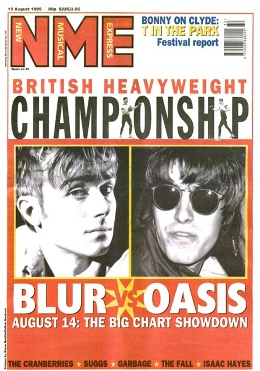
NME - Case Study
History:
New Musical Express, AKA NME, was established in March 1952 as the first British music Magazine to include a Singles chart. It thrived during the 1970's as the best selling British Music amazing due to its association with Gonzo Journalism (1972-1976) which then spread onto associations with Punk Rock through the influential writing of Tony Parsons and Julie Burchill.
NME is a very good representation of the progression of Music magazines through the iconic music phases of the 20th Century.
The 1960's caused the magazine to champion most others at the time; due to rising stars of the UK such as The Beatles and the Rolling Stones; they were also being featured as the viewers most popular artists. As the Psychedelia phase began to spread in musical culture; pop music began to be mistaken for Rock music, which began to cause rivalries with other magazines such as Melody Maker.
The 1970's wasn't looking good as the magazine began to fail to Melody Maker as the pace of music was moving far too quickly for NME to get decent coverage. 1972 seemed the year that the magazine would fail. But the new editor Alan Smith changed the old fashioned uncritical and showbiz-orientated stories; to more cynical and comical. Smith brought in huge writers such as Charles Shaar Murray, Tony Tyler, Iam MacDonald and Neil Norman, which successfully managed to give the magazine a whole new image. The magazine adopted the name "The Enemy" for it's often harsh reviews. Even throughout the Punk era of 1976 onwards; NME was proving to outrun all competition.
In 1981, NME released a cassette containing both famous and new-and-upcoming bands such as Aztec Camera, Orange Juice, Linx, Scritti Politti, Robert Wyatt, Pere Ubu, Buzzcocks, and Ian Dury. The tape was a huge success and began to spark trends all across British magazines. A huge rough patch occured in 1985 as writers were beginning to divide into those loyal to Rock; and those who wanted to write about the new trend of music "Hiphop". Articles also took a random turn with some features on Computer crime and Politics.
The 1990's brought NME back onto the music scene with the "Madchester" scene of Blur and Oasis. Grunge was beginning to transfer from the US to the UK with bands such as Nirvana and Pearl Jam. 1992 saw new British bands such as Suede beginning to conquor the charts. The death of lead singer Kurt Cobaine of Nirvana in 1994 saw the change from Grunge to Britpop; where Oasis and Blur began to compete for the top spot.

Modern day NME is rather different to it's ancestors. May 2008 saw the magazines new re-design; being aimed at an older and more rock-based audience; and inevitabley, has fallen rapidly since 2003.
Branding
NME has managed to make itself as brand-name, as well as a magazine that is still in production. The annual NME awards held at London's famous Royal Albert Hall; and was originally a punning alternative to the Brit awards. The awards include: Best Album, Best Artist, Best Band, Best live act, Best track, etc; Some main winners have included:
1995 - Oasis (3 awards)
1996- Oasis (4 awards)
1999- Manic Street Preachers (4 awards)
2000- Blur (3 awards)
2001- Coldplay (2 awards)
2002- The Strokes (3 awards)
2003- Coldplay (2 awards)
2005- Franz Ferdinand (2 awards)
2006- Artic Monkeys (3 awards)
2008- Artic Monkeys (3 awards)
2009- MGMT (2 awards)
NME has also produced a brand for the NME tours; where a mixture of famous and upcoming bands in groups of 4 performed a series of tours across the country. In 2008, it was reverted back to just one tour.
Some tours include:
- Shockwaves NME Tours
- NME Rock 'n' Roll Riot tours
- NME Radar tour
- NME Freshers tour
- NME New Rave Revolution tour
NME also has a Music channel, as well as Radio station.

No comments:
Post a Comment